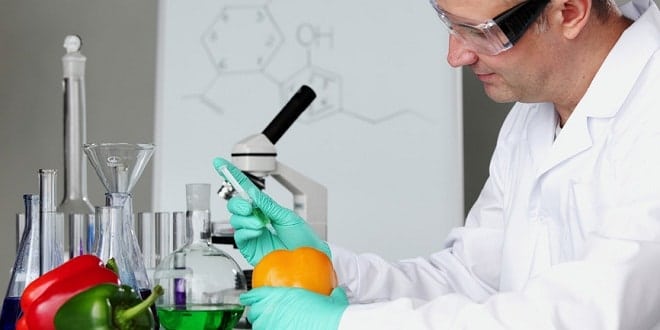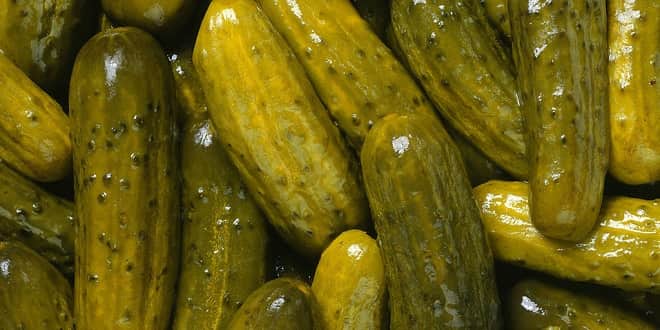Laboratory > Total Hardness With EDTA Method
FE 106 GENERAL CHEMISTRY
Experiment No : 9
Experiment Name : TOTAL HARDNESS WİTH
EDTA METHOD
Submitted by : Mutlu DEMIREL
Group No : 2
Group Members : Sevgi COLAKOGLU
Erdem CATALTEPE
Eray CETIN
Mutlu DEMIREL
PURPOSE:
Determine the hardness in a water sample.
THEORY:
The quality of natural waters is important to the health and survival of all living things. A part of water quality deals with the hardness of water. Water hardness is defined as the concentration of dissolved divalent cations such as Ca2+ and Mg2+. The contributing factors to water hardness are municipal and individual waste, chemicals, fertilizers, herbicides, and pesticides that leach into the groundwater supply. Another factor is the fact that water is the universal solvent, which means it dissolves minerals as it percolates through the soil and rocks.1 Different types of rock give up Ca2+ and Mg2+ ions. Sedimentary rocks such as limestone (calcium carbonate CaCO3) are soluble in acidic water. Calcium also comes from the dissolution of igneous rock revealed by the decomposition of anorthite (CaAl2Si2O8), which occurs in the higher acidity of groundwater. An example of magnesium from the dissolution of rock is the decomposition of fosterite (Mg2SiO4) into serpentite (Mg6(OH)8Si4O10).1
There are no national standards for water hardness published by the Environmental Protection Agency (EPA), because the minerals, calcium and magnesium, are not considered health threats. Levels of water hardness are based the amount of calcium carbonate found in the water sample if the water were evaporated. The water is considered soft if it contains 0 to 60 mg/L of hardness, moderately hard from 61 to 120 mg/L, hard between 121 and 180 mg/L, and very hard if it contains if more than 180 mg/L.2 Commonly accepted level range for calcium is 100-300mg/L and the levels for magnesium are lower, based on how the water tastes.
There are various methods to measure water hardness. These include EDTA titration, Atomic Absorption Spectrometry, TDS (total dissolved solids) test, fluorescence fibre-optic sensor, and test strips.
The EDTA titration process uses EDTA (ethylenadiaminetetracetic acid) as the chelating agent.1 The EDTA attaches itself to the minerals with a bond called a chelate. The EDTA molecule forms complexes with nearly all metals. It forms particularly strong complexes, because it has six points of attachment that allow the molecule to wrap itself around the metal ion. Eriochrome black T (EBT) is the indicator dye used in EDTA titration, which is water soluble due to the sulfonate group’s (-SO3-) negative charge and also a pH indicator, so a buffer is added to make the blue form (HD2-) of EBT predominant. EBT forms a colored chelate with Mg2+, but not Ca2+.1 The initial wine red color is caused by the dye attaching itself to the metal ions. The endpoint of the titration is when all of the ions are coated by the EDTA and there are none left to complex with the dye, so the red color is replaced with sky blue.6 The values gained from the EDTA titration after some calulations are moles of Ca2+ and Mg2+, which can be converted into parts per a million (ppm) hardness of CaCO3.
Applications of EDTA chetation of Ca2+ and Mg2+ include bathroom cleaners in the form of tetrasodium salt because it dissolves lime and scum deposites. CaEDTA (calcium chelate) removes iron/copper that would spoil oil so it is used as a preservative in salad dressings.1 The calcium chelate is also effective in medical treatment for lead toxicity and blood vessel disease.5 EDTA is used as a titrant in industry because it is inexpensive; however, the downsides of it are that it is time consuming, requires a certain level of skill, and is subject to operational errors.
Atomic Absorbtion Spectrometry (AAS) is an instrumental technique that is used to determine the amount of trace elements, metals, dissolved in a solution. AAS is used in modern analytical chemistry, biochemistry, and ecology for inorganic trace analysis. It is used because of its high sensitivity, selectivity, broad scope, low cost, and reliability. Atoms have unique electronic energy levels. The light falling on the atom must match the energy separation between two electronic energy levels to be excited. In other words, absorption will occur if the wavelength of the light is the same as the change of energy.1 The atomic absorbtion spectrophotometer is based on the principle of excited atoms. A monochromatic light that has the energy correponding to the delta energy of the atoms is projected through the sample being analyzed.1 The wavelength used for calcium is 422.7 nanometers (nm), 202.5 nm for magnesium.8 The Beer’s law, A=abc, is used to calculate the metal concentration in the sample because absorbance is proportional to the concentration of the atoms in the sample.1
There are three main chambers of the atomic absorption spectrophotometer. The first chamber is where the source of the light is contained in cathode lamps.1 The fuels / oxidents used for analyzing calcium and magnesium are C2H2 and air.8 The monochromatic light is produced when the atoms relax, which is the opposite of absorption. The light is then absorbed by the Mg or Ca in the water sample in the second chamber. The second chamber is where the water sample enters the process by being aspirated into the sample chamber where it is converted into an aerosol, only about 10% of which is introduced to the flame from the burner. The 2300°C flame is capable of atomizing all of the components of the water sample.1 The light is absorbed by only the Mg or Ca atoms which produces a rich yellow flame.8 The third chamber of the atomic absorption spectrophotometer contains a monochrometer, a detector, and an internal computing system. Only the wavelength of the light corresponding to delta energy, which was produced from the excited metal emissions can pass through the narrow slit for the monochrometer. The detector is a photomultiplier tube (PMT), which detects a decrease in the initial signal from the lamp. The intensity transmitted (It) from the lamp through the flame is regulated by the Beer-Lambert law : It= I0(10-abc). The value given by the internal computing system is the light absorbance, which can be converted to concentration of the metal ion in ppm by the use of a linear regression graph produced from the calibration curve.1
The dissolved total solids test is a visual observation that compares the amount of total dissolved solids in a water sample to that in distilled water. It compares the ring of residue left on aluminium foil when the water is evaporated. The disadvantages of this are that it is only an observation and includes all of the dissolved minerals, not just Mg and Ca.
MATERIALS:
Water sample, conical flask, , Erioch,
PROCEDURE:
1. We took 100 mL of sample into conical flask and add tree drops of phenol phatalein when the color is pink titrate the solution with 0.04 M and the recorded the used amount of acid.
2. Into same sample added three drops of methyl orange when the yellow titrate the sample with same acid until the color turns to red.
ANSWERS:
1. Total Hardness : The combined concentration of earth-alkali metals, predominantly magnesium (Mg 2+ ) and calcium (Ca 2+ ), and some strontium (Sr 2+ ). Most natural waters have a more or less high level of hardness. The source of this hardness is limestone dissolved by water rich in carbon dioxide. Total Hardness is expressed in mg/L of calcium carbonate (CaCO 3 ), though calcium carbonate is not water soluble, but calcium bicarbonate is. Hardness levels range from <50 mg/L (soft) to >500 mg/L (very hard).
Calcium Hardness : The calcium portion of total hardness expressed as calcium carbonate. Typically 65-75% of total hardness. Low calcium hardness can cause damage to pool surface and components.
Carbonate Hardness : The part of the total hardness that is formed by the ions of carbonates(Co3) and hydrogen carbonate(HCo3). It is symbolized by dCH. It is important to know the dCH of your water, as it affects both the ph. and Carbon Dioxide amounts in your water. It is also commonly called “buffering capability”. a dCH of 4 to 8 is fine for most fish.
Temporary Hardness : Hardness is produced by calcium and magnesium in water. These ions cause a precipitate with soap. Temporary hardness is caused by bicarbonate and can be removed by boiling which converts the bicarbonate to carbon dioxide and calcium carbonate.
Permanent Hardness : Permanent hardness can be removed by
· the addition of washing soda (sodium carbonate)
· ion exchange
· the use of polyphosphate water softeners
All the methods that remove permanent hardness also remove temporary hardness at the same time.
Alkalimetric Titer: the term can reflect the nature of the titrant, such as acidimetric, alkalimetric, iodimetric titrations as well as coulometric titrations, in which the titrant is generated electrolytically rather than being added as a standard solution.
German hardness: 1 °DH = 10 mg/L CaO = 0.178 mmole/L Ca (M(CaO) = 56 g/mole)
English hardness: 1 °EH = 1 grain/UK gallon CaCO3 = 0.142 mmole/L Ca (1 grain = 64.79891 mg; 1 UK gallon = 4.54596 L)
French hardness: 1 °FH = 10 mg/L CaCO3 = 0.1 mmole/L Ca (M(CaCO3) = 100 g/mole)
American hardness: 1 °AH = 1 ppm CaCO3 = 1mg/L CaCO3 = 0.01 mmole/L Ca
2. The following hardness classes can be distinguished
0-4 °DH (0-0.7 mmole/L Ca): very soft water
4-8 °DH (0.7-1.4 mmole/L Ca): soft water
8-12 °DH (1.4- 2.1 mmole/L Ca): normal water
12-18 °DH (2.1-3.2 mmole/L Ca): hard water
>18 °DH (>3.2 mmole/L Ca): very hard water
In The Netherlands the hardness of drinking water should be in the range of 1-2.5 mmole/L Ca.
Hard water is not unhealthy. Calcium en magnesium are essential minerals for our bones.
3. Water is used a lot of process in food industry. So water is very importatnt for food industry.
Effects of hard water :
a) cause the heat loses ( energy loses )
b) reduce the cleaning ability of soap
c) reduce the foaming ability of soap
d) changes the water boiling scala
4. 1. We took 100 mL of sample into conical flask and add tree drops of phenol phatalein when the color is pink titrate the solution with 0.04 M and the recorded the used amount of acid.
2. Into same sample added three drops of methyl orange when the yellow titrate the sample with same acid until the color turns to red.
CALCULATION:
DISCUSSION:
Water is referred to as the “universal solvent” because, over the course of time, water will dissolve or erode almost any material that it is in contact with. It is this natural occurrence that contributes to the hardness of water.
Water hardness is normally referred to as a measure of the soap or detergent consuming power of water. Technically, hard water is water having a high concentration of calcium and magnesium ions. These, along with other minerals, are commonly present in all natural water.
Water is used a lot of process in food industry. So water is very importatnt for food industry.
Effects of hard water :
a) cause the heat loses ( energy loses )
b) reduce the cleaning ability of soap
c) reduce the foaming ability of soap
d) changes the water boiling scala
e) unhealty
…




